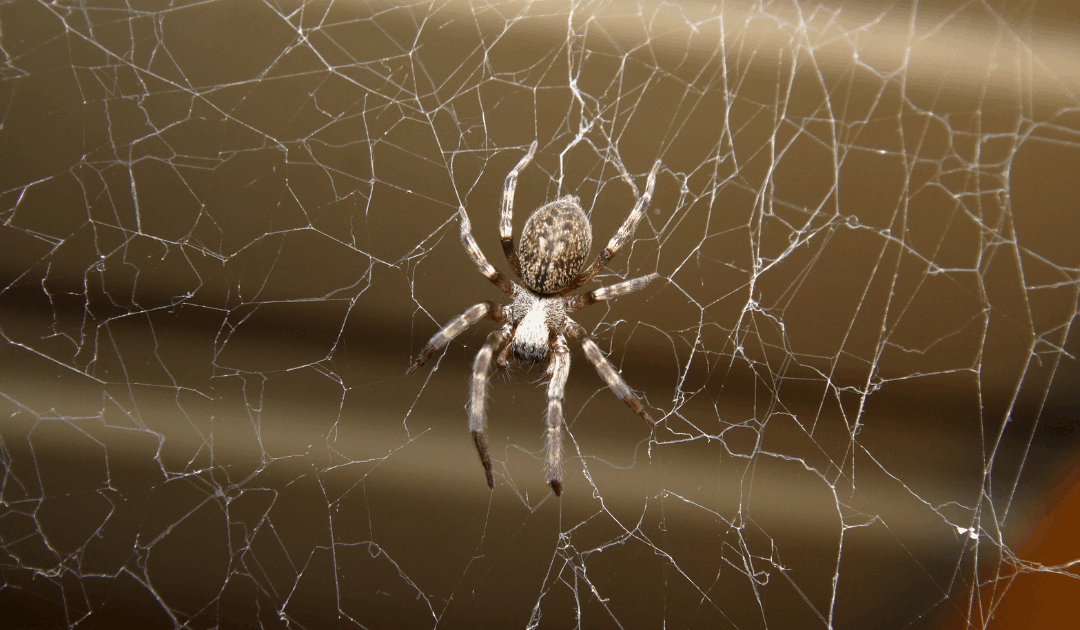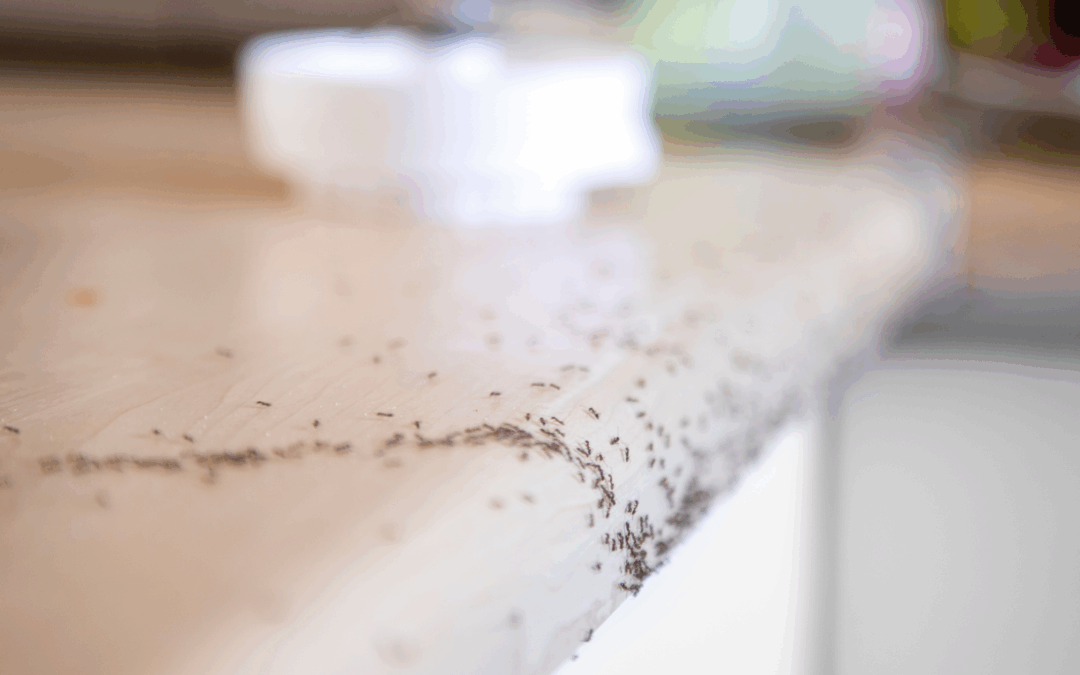READY TO GET STARTED?
REQUEST A FREE ESTIMATE
Fill out the form below or call (888) 466-7849 for a free, no-obligation estimate.

For owners and managers of commercial properties, maintaining a clean, healthy, and pest-free environment is essential. Pest infestations can disrupt operations, harm your reputation, and result in significant financial loss. Green pest control offers a responsible, effective solution that aligns with sustainability goals and modern business practices.
Rooted in Integrated Pest Management (IPM), this approach protects tenants, customers, and your brand. This guide explains why a sustainable pest management program is critical and what to look for in a professional commercial pest control provider.
Sustainability is a core business value that influences consumer and tenant decisions. Implementing green pest control demonstrates environmental stewardship and concern for public health. This responsible choice enhances your brand, appeals to eco-conscious clients and tenants, and differentiates your business in a competitive market.
Green pest control reduces conventional chemical treatments, improving indoor air quality and reducing occupant exposure. In multi-tenant buildings, offices, and retail spaces, this approach creates a healthier, more comfortable environment for employees, customers, and visitors while reducing potential complaints and liability.
A sustainable strategy focuses on prevention rather than reacting to pest sightings. IPM identifies and eliminates root causes, including entry points, moisture, sanitation gaps, and habitats. Addressing these conditions results in long-lasting results and can reduce costs from repeated infestations and property damage.
Ask potential providers about their IPM program. A reputable partner emphasizes inspections, continuous monitoring, and non-chemical methods such as structural exclusion, habitat modification, and sanitation consulting. Chemicals are used only when necessary and applied in a targeted way.
Commercial properties vary from offices to warehouses and retail centers, each with unique pest challenges. Providers should have experience with different commercial clients, understand how to work discreetly, schedule services to minimize disruption, and comply with regulations.
A professional provider acts as a strategic partner in maintaining your property’s integrity. Look for transparent documentation of inspections, pest activity, and any materials used. Clear, consistent communication is essential for a successful partnership and demonstrates due diligence during audits.
Adopting green pest control strengthens your brand, supports sustainability goals, and creates a healthier environment for everyone on your property. By focusing on prevention and partnering with an IPM expert, you can achieve long-lasting protection. For a tailored, responsible pest management plan, contact a certified pest control professional today.

Maintaining a clean, pest-free environment is essential for any retail business. A single sighting can harm your reputation, deter customers, and damage inventory. While traditional pest control works, more businesses are turning to sustainable pest control for its effectiveness, environmental responsibility, and alignment with customer expectations.
A sustainable retail pest control strategy goes beyond being “green.” It protects customers, employees, and products while supporting your brand’s commitment to quality and care. This guide explains why sustainability matters and what to look for in a professional partner.
Modern consumers care about environmental and health practices. Adopting sustainable pest control shows responsibility and enhances your brand image. It also reduces broad chemical applications, creating a more pleasant shopping environment and a healthier workplace.
Rodents, cockroaches, and stored product pests can damage inventory and cause financial loss. Rodents gnaw through packaging, while insects can contaminate stock. Sustainable pest control emphasizes proactive exclusion and monitoring to prevent access, offering a more effective solution than reactive treatments.
Sustainable pest control uses Integrated Pest Management (IPM), which focuses on pest biology and behavior to address root causes like entry points, food sources, and harborage. By sealing gaps, improving sanitation, and managing moisture, IPM provides lasting results beyond repeated chemical treatments.
A sustainable provider leads with IPM. Their plan should start with a thorough inspection to identify pest pressures and conducive conditions. Non-chemical solutions should be prioritized, including door sweeps, sealing wall cracks, and improved waste management.
Retail spaces have unique challenges, from high-traffic areas to sensitive storage. Providers should have proven experience, understand how to operate discreetly during business hours, protect merchandise, and address common retail pests like flies, rodents, and ants.
Transparency is key. A professional provider maintains thorough records of service visits, pest activity, and corrective actions. Documentation supports audits and internal quality control. Providers should also communicate regularly with facility managers to report findings and recommend preventative actions.
Sustainable pest control is a strategic investment in your retail business. By focusing on prevention and partnering with an IPM-specialized provider, you create a clean, welcoming environment that protects customers, employees, and inventory. For a tailored, effective pest management plan, contact a certified commercial pest control professional today for a free quote.

No one enjoys walking into a web on the way to the mailbox or finding a surprise eight-legged visitor in the shower. If you live in Peachtree Corners and want fewer spiders without harsh chemicals or expensive treatments, eco-friendly methods can help.
Georgia’s warm, humid climate makes our area perfect for a variety of spider species. With consistent natural prevention strategies, you can reduce indoor spider activity while protecting your household and the environment.
Our subtropical climate supports common spiders such as house spiders and wolf spiders, with occasional brown recluses or black widows. Most are harmless and even help control other pests, but that doesn’t mean they belong in your living space.
Spiders move indoors seeking food, water, and shelter. Removing these attractions is the first step in keeping them out naturally.
Preventing entry is more effective than dealing with an infestation later. These strategies make your home less appealing to spiders while preserving beneficial insects.
Spiders can slip through tiny gaps. Inspect and seal potential entryways:
Clutter provides hiding spots and attracts insects spiders feed on. To limit this:
Outdoor lights attract insects, which attract spiders. Use yellow or sodium vapor bulbs, or opt for motion-activated lights to reduce insect activity near your home.
Eco-friendly repellents can help discourage spiders from entering your home.
Mix 10–15 drops of peppermint, citrus, tea tree, or eucalyptus oil with water in a spray bottle. Apply around windows, doors, and corners weekly or after cleaning.
Combine equal parts white vinegar and water. Spray along baseboards, entry points, and common spider areas. The scent fades quickly for people but lingers for spiders.
Add plants spiders dislike to your landscaping:
Consistency is key for long-term success.
Vacuum corners, baseboards, and under furniture. Remove webs immediately to disrupt spider activity and discourage return.
Limit humidity using exhaust fans in kitchens and bathrooms, fixing leaks quickly, ventilating crawl spaces, and using dehumidifiers in damp areas.
Since spiders feed on other insects, reducing indoor pest activity will naturally reduce spiders. Keep kitchens clean and promptly address any insect problems.
If spider activity persists, consider eco-friendly supplemental measures:
Natural spider control takes persistence but provides lasting benefits. Track where spiders appear most often and adjust prevention methods accordingly.
With consistent prevention, natural repellents, and routine maintenance, you can encourage spiders to stay outdoors where they belong.
Spiders do play a role in controlling other pests, but the goal is to keep that work outside, not inside your home. For ongoing prevention and targeted solutions, contact your local pest control professionals. They can create a customized plan that supports your eco-friendly preferences while keeping your home web-free.

Pests are a common concern for homeowners and businesses across Florida, from ants and cockroaches to termites and mosquitoes. Many wonder whether natural or less chemical-intensive pest control methods can really compete with traditional approaches. Misunderstandings about these methods often prevent people from considering alternatives. This blog breaks down common myths about chemical-free pest control, highlights how effective these methods can be, and addresses Florida’s unique pest challenges.
Several misconceptions surround non-chemical pest control. Here are the most common myths debunked:
Reality: When applied correctly, non-chemical techniques are highly effective. They often use natural repellents, traps, and targeted treatments designed to eliminate pests without harming beneficial insects or causing environmental damage. Long-term strategies focus on habitat modification and exclusion to address the root causes rather than quick fixes.
Reality: These approaches can handle large infestations too. Thorough inspections, targeted treatment, and prevention measures can manage serious pest problems, from termite damage to mosquito control, without sacrificing results.
Reality: While upfront costs may sometimes be higher, these methods often save money over time by reducing repeat treatments and preventing recurring infestations. They also reduce potential health risks associated with exposure to harsh chemicals.
Florida’s warm, humid climate makes pest management a year-round concern. Here are some benefits of using non-chemical methods:
Many natural pest control products use low-risk materials that minimize exposure risks for children, pets, and plants. Unlike some pesticides that leave residues, these treatments focus on managing pests without harmful side effects.
Rather than temporary relief, non-chemical pest control emphasizes prevention by sealing entry points, improving sanitation, and making properties less inviting to pests.
If you want to explore these methods, follow these tips:
Choosing less chemical-intensive pest control doesn’t mean sacrificing results. When applied properly, these methods can be just as effective as traditional treatments. By addressing the root causes of infestations and focusing on prevention, they offer lasting benefits for your home and family.
If you’re dealing with pests, consider contacting local pest control professionals who can assess your situation and recommend the best treatment options tailored to your needs and Florida’s unique environment.

Finding ants in your bathroom can be a frustrating surprise, whether it’s a lone scout or an entire trail marching across your sink. These persistent pests are often drawn to damp spaces and sugary or soapy residues, making your bathroom a prime target. Luckily, you don’t need harsh chemicals to get rid of ants. With eco-friendly methods, you can tackle the problem swiftly and effectively while causing no harm. Here’s how to eliminate ants in your Anniston bathroom the green way, while keeping your family and the environment in mind.
Understanding why ants are in your bathroom is the first step to getting rid of them. Ants are often searching for two things in this space:
Once they’ve found what they’re looking for, ants leave behind a chemical trail for others to follow, expanding the infestation. Addressing these attractants is key to stopping their march.
Ants are tiny and highly flexible, which means they can enter through the smallest cracks or openings. Seal these gaps to prevent their access.
Blocking their pathways sends a clear message that your bathroom is off-limits.
Skip the chemical sprays and opt for natural solutions that are effective yet healthier or your family and pets.
Other natural deterrents like citrus peels, bay leaves, or coffee grounds can also be placed near entry points to keep ants away.
Cleanliness is crucial in making your bathroom less inviting to ants.
By removing their food and water sources, you’ll make it harder for ants to stick around.
Preventing ants from returning is just as important as getting rid of the current infestation. Here’s how you can maintain an ant-free bathroom:
Taking these steps makes your bathroom less appealing to ants and other pests over the long term.
Getting rid of ants in your Anniston bathroom doesn’t have to mean using harmful pesticides. With a few simple changes, like sealing entry points, using natural repellents, and keeping things dry and clean, you can tackle the problem in an environmentally friendly way. Plus, with preventative measures in place, you’ll keep them out for good.
Eco-friendly pest control provided by a pest control company near you will keep your home and the planet, ensuring a healthier, greener future for all!